Introduction
Product Overview
{{section_header}}{{section.name}}{{/section_header}}
The PS 20 NCs may look like they emulate the iPod earbuds, but there is quite a bit that sets them apart.
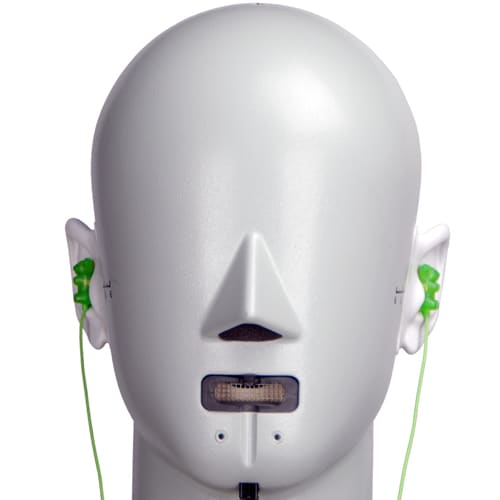
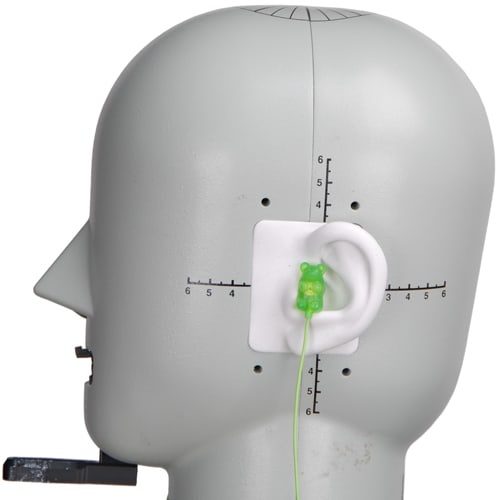
Speakers
{{section_header}}{{section.name}}{{/section_header}}
The Phiaton PS 20 NC's speaker is protected by a mesh gate at the very end of the earbud's nozzle (sleeves removed in the picture below).
Sides
{{section_header}}{{section.name}}{{/section_header}}
Back
{{section_header}}{{section.name}}{{/section_header}}
The back of the PS 20 NCs prominently display the brand name in the same shade of subdued grey found on the small rubber bits of the earbud casing.
Band
{{section_header}}{{section.name}}{{/section_header}}
Cable
{{section_header}}{{section.name}}{{/section_header}}
The PS 20 NC's cable is made up of a fairly thin wire and similarly thin insulation. Below the cable split is an in-line active noise cancellation control box.
The Phiaton PS 20 NC's plug is a standard, unexciting, 1/8th-inch jack.
The cord guards on the earbuds, like all the others, are cheaply-manufactured sections of rubber tubing that doesn't exactly fit well around the cables themselves or makes any type of seal with the insulation.
Additional Features
{{section_header}}{{section.name}}{{/section_header}}
Below the cable split is the bulky noise-cancellation control box, on the back of which there is a clip.
In the Box
{{section_header}}{{section.name}}{{/section_header}}
In the loosely-packed box of the Phiaton PS 20 NCs are your earbuds, airplane jack adapter, 4 different sizes of silicone sleeves, a carrying case and a multilingual instruction booklet. Also included is a registration card with pre-paid postage.
Durability
{{section_header}}{{section.name}}{{/section_header}}
While the the earbuds themselves seem to be about as durable you can expect for entry-level earbuds, they don't afford much in the way of easy cable replacement, which could potentially be a problem if you wish to use your earbuds everywhere. The fact of the matter is, cables break. Often. It doesn't help the longevity of a pair of in-ears when cables can't be replaced, nevermind the extra soldering points from the in-line feature. Be careful with these.
Aesthetics
{{section_header}}{{section.name}}{{/section_header}}
As you've probably noticed by now, the Phiaton PS 20 NCs appear to have been designed with emulating the iconic iPod earbuds as a high priority. Aside from the nozzle, if you were to see these from a distance, you may think that the listener was wearing the original iPod earbuds. Still, the tiny metal accent doesn't make it any more original or appealing than the earbuds the PS 20 NCs emulate.
Frequency Response
{{section_header}}{{section.name}}{{/section_header}}
The Phiaton PS 20 NCs have a very odd dynamic response, possibly due to tracking issues we will discuss later. For the most part, it wasn't too bad as there were no dramatic boosts or dips in dB until the 6kHz to 10kHz range. However, there was an interesting discrepancy in bass response between the two channels, as the left channel appeared to produce sound under .75kHz at a much louder level than the right channel. After that, the right channel was louder for a short range of frequencies (roughly .8kHz to 4kHz) before both channels started to fluctuate in unison. As you'll notice in the graph, there's a decent spike in dB level at around the 8kHz range, which is where you'll hear cymbal crashes and sibilants (s sounds, sh sounds, etc). While it's not a major issue, it will be something you should notice readily when listening to the PS 20 NCs.

Click here for more information on our frequency response test.
Distortion
{{section_header}}{{section.name}}{{/section_header}}
The Phiaton PS 20 NCs had no outstanding distortion issues along the audible frequency spectrum.
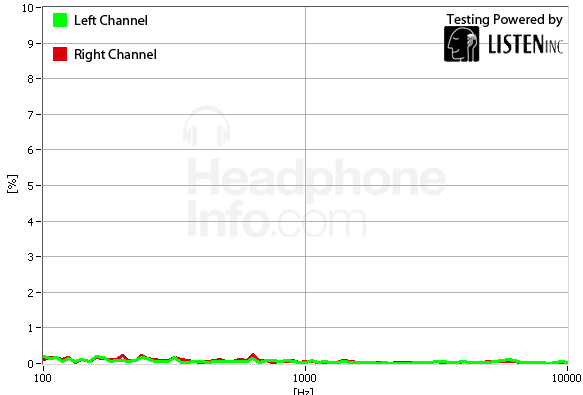
Click here for more information on our frequency response test.
Tracking
{{section_header}}{{section.name}}{{/section_header}}
As previously mentioned, the tracking for these in-ears is quite bad. For some inexplicable reason, the headphones seem to favor the left channel for lower frequency sounds, and as the frequency increases, the favored channel becomes difficult to predict. Eventually the tracking more or less evens off, but only in the highest end of the audible frequency spectrum.
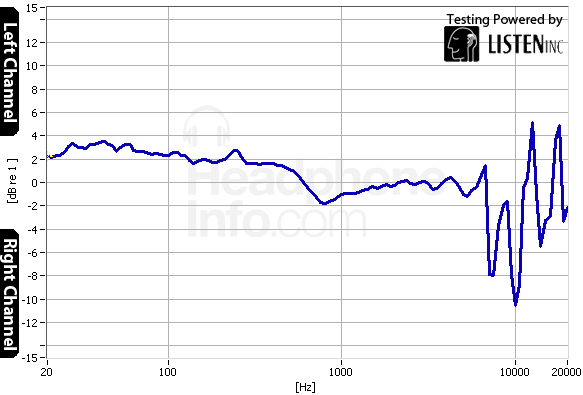
Click here for more information on our frequency response test.
Isolation
{{section_header}}{{section.name}}{{/section_header}}
The Phiaton PS 20 NCs don't provide much in the way of passive noise attenuation, but the active noise cancellation feature does manage to block out a fair amount of low-frequency noise. Looking at the graph below, you can see that there is a significant dropoff in the isolation at about the average range where you'd hear the fundamental frequencies of most people's normal speaking voices (anywhere from 500 to 1.2 kHz), so expect to hear outside conversations if you use these earbuds.

Click here for more information on our isolation test.
Leakage
{{section_header}}{{section.name}}{{/section_header}}
The PS 20 NCs are in-ears, so we typically can expect that they won't leak much sound if there's a good fit in the ear canal. Testing confirmed this.
Click here for more information on our leakage test.
Maximum Usable Volume
{{section_header}}{{section.name}}{{/section_header}}
A strong suit of the PS 20 NCs, the earbuds can get very loud without losing much audio quality to distortion. In our tests we managed to pump up the volume to over 120dB without passing the magic 3% distortion mark. Still, it would be irresponsible not to point out that if you listen to your headphones at or above the 120dB level, you stand a good chance of irreparably harming your hearing.
Click here for more on our maximum usable volume test
Short-Term Use
{{section_header}}{{section.name}}{{/section_header}}
Like most in-ears, with the {{product.name}}s you're essentially jamming a tiny microphone into a small orifice that was not meant to have anything inside of it, so discussing "comfort" is relative at best. In the short term, it feels much as other entry-level earbuds normally would, although the buds can and will fall out if you don't get the best fit via the plastic sleeves.

Extended Use
{{section_header}}{{section.name}}{{/section_header}}
Over the course of a couple hours, the experience doesn't change much. Given your propensity for getting annoyed at foreign objects in your ear canals, the annoyance factor can build and compound over time. It's also possible for the buds to fall out of your ears during strenuous activities, as there is no extra stabilization or a different type of sleeve like the triple-flange types offered by higher-end in-ear headphones to prevent this from happening.
Customizability
{{section_header}}{{section.name}}{{/section_header}}
As far as customizability goes, your options include any of the 4 sizes of the same type of sleeve for your earbuds, and whether or not you decide to put a battery in the noise cancellation control box. Aside from that, there's only the airplane adapter which is only useful during in-flight movies.
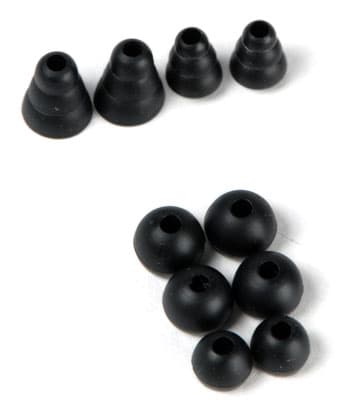
Cable Connectivity
{{section_header}}{{section.name}}{{/section_header}}
The cable of the Phiaton PS 20 NCs is the standard 3.93 feet long, with a cable split and an in-line noise cancellation control box. For those planning to use the noise cancellation feature, batteries are fortunately included. In an effort to prevent price-gouging at 30,000 feet, Phiaton has included an adapter for the 1/8th inch jack to plug into to allow you to use your PS 20 NCs to listen to in-flight movies without shelling out an exorbitant fee to watch a movie you'll probably end up hating by the end.
Portability
{{section_header}}{{section.name}}{{/section_header}}
The PS 20 NCs come with a neat little crushed carrying pouch, while visually appealing, is little more than a sack to cram your earbuds and accessories into when you're not listening to them. Inside, there is no means to store your accessories without making them fly everywhere if you're not careful in removing your earbuds.
Maintenance
{{section_header}}{{section.name}}{{/section_header}}
Like most entry-level earbuds, there is no included maintenance kit to clean your nozzles or replace broken cables. If you break or grime something up really bad, prepare yourself to make a decision on getting new headphones or sitting down for a good long time with a fine-pointed soldering iron and wire-cutters.
Other Features
{{section_header}}{{section.name}}{{/section_header}}
Battery
The PS 20 NCs require a standard AAA batter to power the noise-cancellation for up to 50 hours. While it's necessary to power an active noise attenuation unit with a battery, it definitely adds an annoying complication and expense to normally hassle-free listening.
Active Noise Cancellation
As previously explored, the Phiaton PS 20 NCs have an active noise cancellation feature. As far as additional information you should know about it, the in-line control box has two switches, one to turn the feature on and off, the other to temporarily mute the music while the noise cancellation is on.
Design
{{section_header}}{{section.name}}{{/section_header}}
Both sets of earbuds are fairly robust, so you shouldn't have many issues here. Be aware that neither have easy cord replacement features. The Panasonic RP-HC55s have better cord guards than the PS 20 NCs, though.
Frequency Response
{{section_header}}{{section.name}}{{/section_header}}
The Phiaton PS 20 NCs had a bit better frequency response, as the Panasonic RP-HC55s had a bit of trouble with underemphasis.
Distortion
{{section_header}}{{section.name}}{{/section_header}}
The Phiaton PS 20 NCs don't have the same distortion issues that the RP-HC55s do, which are significant. It is important to note that much of this distortion problem comes from the fact that you cannot turn off the active noise cancellation feature, which by its very nature means that it will distort some sound to cancel out ambient noise.
Tracking
{{section_header}}{{section.name}}{{/section_header}}
Both units had difficulty in maintaining even tracking, but the Panasonic RP-HC55 managed to stay consistent in channel levels, whereas the PS 20 NCs were all over the place.
Isolation
{{section_header}}{{section.name}}{{/section_header}}
Without a doubt the RP-HC55s perform much better than the PS 20 NCs in terms of active noise cancellation and isolation. If you like to listen to music on the subway or to football in church, the RP-HC55s stand a lower chance of disturbing the outside world
Comfort
{{section_header}}{{section.name}}{{/section_header}}
Based on our listening experience with each set of in-ears, the main sticking point seems to be the noise cancellation battery housing on each. Both are heavy and need to be clipped to something without putting strain on the plastic sleeves in your ear canal. Both sets of in-ears will probably give you a modicum of comfort, but they're still in-ears, all said and done.
Verdict
{{section_header}}{{section.name}}{{/section_header}}
Essentially, you need to decide if you want a pair of in-ears that are cheaper, but don't perform as well with sound quality and require batteries to operate, or a more expensive pair with better sound quality but worse noise cancelling. If you absolutely must be dead to the world with your headphones on, you may want to grab the Panasonic RP-HC55s
Design
{{section_header}}{{section.name}}{{/section_header}}
The Audio-Technica ATH-ANC3s are similarly colored, but lack the crummy cord guards of the PS 20 NCs. They have a more robust design and thicker cord for the sake of durability. Simply put, the PS 20 NCs are a bit outclassed here.
Frequency Response
{{section_header}}{{section.name}}{{/section_header}}
Unlike the PS 20 NCs, the frequency response of the Audio-Technica ATH-ANC3s is less erratic, even if they dramatically over-emphasize the 7kHz to 9kHz range (this range contains the initial attack of a drum strike, so expect to hear a huge boost in drum volume with the Audio-Technica ATH-ANC3s).
Distortion
{{section_header}}{{section.name}}{{/section_header}}
If distortion in your listening experience makes you have an incredible-Hulk-grade meltdown, the Audio-Technica ATH-ANC3s are probably not for you. The entry-level Phiaton PS 20 NCs have much less measurable distortion, and are less likely to impact your listening experience.
Tracking
{{section_header}}{{section.name}}{{/section_header}}
The Audio-Technica ATH-ANC3s have better tracking than the Phiaton PS 20 NCs noticeably so in the lower frequency ranges, as they don't seem to favor one side or the other, unlike the PS 20 NCs' inexplicable left-channel preference in the bass frequency range.
Isolation
{{section_header}}{{section.name}}{{/section_header}}
While the two share essentially the same passive attenuation performance, the active noise cancelling feature on the Phiaton PS 20 NCs do a much better job of blocking out a bunch of low-frequency noise.
Comfort
{{section_header}}{{section.name}}{{/section_header}}
Due to the increased ability to block out low-frequency sound like large motor vehicles coming your way, it's probably a good thing that the PS 20 NCs won't stay in if you are jogging. Still, this is an area in which the Audio-Technica ATH-ANC3s are clearly superior to the PS 20 NCs. Owners of the latter may or may not have a shorter life expectancy in busy thoroughfares.
Verdict
{{section_header}}{{section.name}}{{/section_header}}
Again, this one's up to you, the consumer. If you want audio quality, go with the Audio-Technica ATH-ANC3s. If you want isolation, absolutely go with the PS 20 NCs. Either way, as far as entry-level in-ears go, it's hard to go wrong with either.
Design
{{section_header}}{{section.name}}{{/section_header}}
The Sennheiser PXC 250-IIs are a decently lightweight set of over-ear cans that are well-designed. The Phiaton PS 21 NCs are in-ear headphones that try too hard to look like the standard iPod earbuds.
Frequency Response
{{section_header}}{{section.name}}{{/section_header}}
The Sennheiser PXC 250-IIs have a nice-looking frequency response compared to the PS 20 NCs, which have some pretty interesting issues with bass response and poor channel volume congruency.
Distortion
{{section_header}}{{section.name}}{{/section_header}}
While Sennheiser is famous for making low-distortion headphones, in an odd twist of events, the Phiaton PS 20 NCs gave us a lower level of distortion. Still, it's worth mentioning that the Sennheiser over-ears only had a small distortion problem that you are unlikely to notice in the very low end of the bass range.
Tracking
{{section_header}}{{section.name}}{{/section_header}}
Neither set of headphones has the best tracking in the world, but only the PS 20 NCs' tracking was bad enough to throw off its frequency response. Choosing a superior set of headphones by this metric would be like nominating the Green Party presidential candidate.
Isolation
{{section_header}}{{section.name}}{{/section_header}}
While both sets of headphones have similar passive noise attenuation, the active noise cancelling feature on the Phiaton PS 20 NCs block out much more low-frequency sound than the Sennheisers. If you're more likely to listen to your headphones while walking in the middle of the road, that may not be a good thing, but for now we'll just say that the in-ear PS 20 NCs are a bit better across the board in isolation.
Comfort
{{section_header}}{{section.name}}{{/section_header}}
If you love cramming small, plastic-ensconced electronics in your sensitive ear canal, you probably love in-ears. For us, the over-ear design of the Sennheiser PXC-250IIs is far more comfortable hands-down, especially in the long term.
Verdict
{{section_header}}{{section.name}}{{/section_header}}
Really, this one comes down to isolation and cost vs. audio performance. If you're willing to shell out a little bit extra for higher sound quality, the Sennheiser PXC-250IIs are the clear choice in comparison. If you'd rather not hear the bus coming before it hits you, the active noise cancellation of the Phiaton PS 20 NCs have you covered.
Design
{{section_header}}{{section.name}}{{/section_header}}
The design advantages and drawbacks of over-ear headphones and in-ear headphones are fairly representative of what the Bose QuietComfort 15s and Phiaton PS 20 NCs will throw at you in terms of issues, but the Bose QuietComfort 15s offer easy cord replacement and a metal band for durability that the PS 20 NCs can't match.
Frequency Response
{{section_header}}{{section.name}}{{/section_header}}
Well, as indicated by the smug inclusion of the courtesy cards, we thought Bose may be a bit big for their britches, and surprise surprise, their frequency response was terrible. As you can see from the comparison charts below, the Phiaton PS 20 NCs have a somewhat bad repsonse, and the Bose QuietComfort 15s have an awful one: complete with erratic peaking and dropoffs in repsonse, and a consistently erratic response after the decent bass output.
Distortion
{{section_header}}{{section.name}}{{/section_header}}
While neither set of headphones had a problem with distortion, the PS 20 NCs will give you a consistently better level of distortion, even if the difference between them and the QuietComfort 15s is barely audible.
Tracking
{{section_header}}{{section.name}}{{/section_header}}
The Bose QuietComfort 15s had a better tracking response than the Phiaton PS 20 NCs, but that isn't really hard-hitting analysis, as the tracking for the PS 20 NCs are quite poor.
Isolation
{{section_header}}{{section.name}}{{/section_header}}
Though in-ears are typically better at noise attenuation by design, the Bose QuietComfort 15s offer a much better level of noise cancellation than the humble PS 20 NCs. The level of bass isolation in the Bose cans is frankly ridiculous, and it's very hard to match. You may notice that with noise cancellation turned on for the Bose over-ears that there is a little bit of noise added, but overall this isn't enough to make them worse than the PS 20 NCs.
Comfort
{{section_header}}{{section.name}}{{/section_header}}
Neither of these headphones are very good at staying on/in your head when moving around more than a little bit. The Bose headphones are comfortable at first but heavy, meaning they have quite a bit of inertia when moving around. The Phiaton PS 20 NCs are lightweight, but generally get less and less comfortable as time goes on.
Verdict
{{section_header}}{{section.name}}{{/section_header}}
Aside from the normal in-ear versus on-ear arguments, Bose has decided to make this one easy on us by making their cans cost almost twice as much as the PS 20 NCs. Though the Phiaton earbuds aren't perfect by a longshot, you may prefer them simply because of the audio quality difference alone. The Bose QuietComfort 15s do offer an insane amount of noise-cancellation, but the PS 20 NCs' active noise cancellation isn't bad either.
Conclusion
{{section_header}}{{section.name}}{{/section_header}}
The Phiaton PS 20 NCs are certainly not a bad entry-level option. Their tracking is a bit off, and they're not the most robust units, but they offer acceptable audio quality with decent active noise cancellation if you elect to use it. While they do look quite a bit like the classic iPod earbuds, you will certainly not mistake their performance (or pricetag) for them.
If you are looking for a decent entry-level set of noise-cancelling earbuds, these may be the fit for you, but be aware that they come with all the standard drawbacks of active noise cancellation and a lack of durability.
Meet the tester
A seasoned writer and professional photographer, Chris reviews cameras, headphones, smartphones, laptops, and lenses. Educated in Political Science and Linguistics, Chris can often be found building a robot army, snowboarding, or getting ink.
Checking our work.
Our team is here for one purpose: to help you buy the best stuff and love what you own. Our writers, editors, and lab technicians obsess over the products we cover to make sure you're confident and satisfied. Have a different opinion about something we recommend? Email us and we'll compare notes.
Shoot us an email
